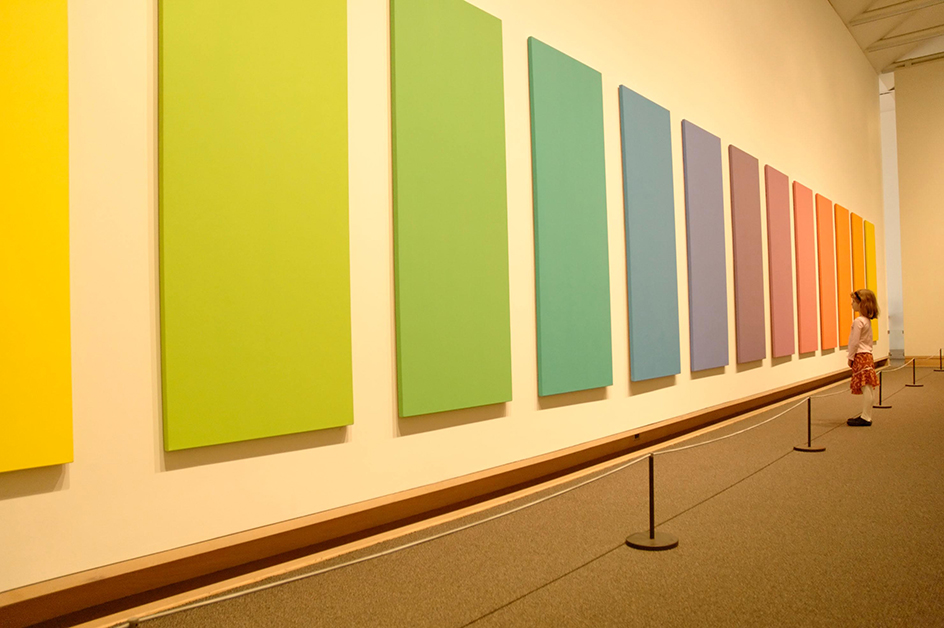Kelly, Ellsworth (1923-2015), was an American painter, sculptor, and printmaker associated with the Minimalism movement. Minimalism is a style that developed during the 1960’s, particularly in the United States. Minimalist art avoids recognizable images, the illusion of space, and narrative (storytelling) content. The style focuses on the basic elements of art, such as line, shape, and color.

Kelly began painting in his best-known style in 1952 while living in Paris. His works from this time have clear, simple designs with hard, clean forms. Many of his later paintings consist of a single bright color smoothly applied to the surface to hide any evidence of brushstrokes. Some of his paintings consist of several individual panels placed together to create a single work. The panels are the same size but painted in different solid colors.
Kelly’s works are examples ofhard-edged painting, an abstract style that emphasizes sharply defined shapes and flat colors. Along with the American artist Frank Stella, Kelly was one of the first artists to use shaped canvases effectively. A shaped canvas departs from the traditional square or rectangular picture surface in favor of such shapes as the V, the circle, and the semicircle.
As a sculptor, Kelly became known for creating works out of painted sheets of aluminum. These sculptures were often made in a factory using the artist’s instructions, rather than by the artist in his studio. Kelly was also an accomplished printmaker. His prints employ many of the characteristics of his painting style.
Kelly was born on May 31, 1923, in Newburgh, New York. He studied art at the Pratt Institute from 1941 to 1943. After serving in World War II (1939-1945), he studied at the School of the Museum of Fine Arts in Boston in 1946 and 1947. Kelly then lived and studied in Europe from 1948 to 1954, when he moved to New York City. Kelly died on Dec. 27, 2015.
See also Minimalism .
